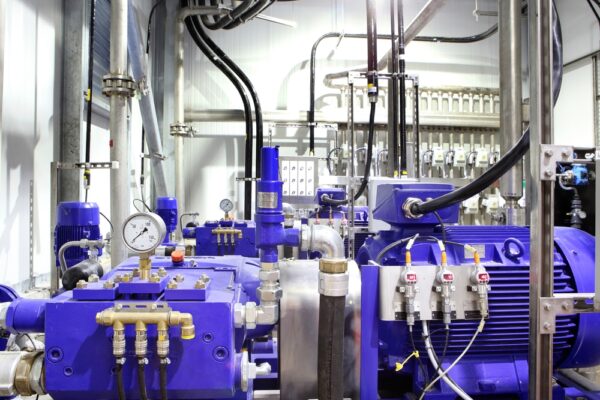Best Practices for Routine Hydraulic Inspections

Fluid power systems are some of the most important elements in any production environment. They also require careful service and maintenance to remain safe and functional. Regular inspections are critical and demand attentiveness and thoroughness to ensure the equipment’s ongoing efficacy.
By following best practices for routine hydraulic inspections, maintenance technicians can identify potential issues before they become major problems, saving time and money — and potentially even lives.
Hydraulic system components
Hydraulic systems are complex machines relying on many key components. From the pump to the control valves and pistons, each part plays a crucial role in the system’s overall performance. Pay close attention to the following components:
- Reservoir
- Pump
- Valves
- Actuators
- Vane pumps
- Piston pumps
- Gear pumps
- Hydraulic fluids
As with any machine, wear and tear and age can lead to malfunctions or breakdowns. This is why it’s essential to inspect each component regularly and identify potential issues before they escalate.

Steps for successful hydraulic testing
By caring for your hydraulic system’s various parts and giving them the necessary service and maintenance, you can extend their lifespan and save money on costly repairs in the future. When it’s time to test your hydraulic systems, follow these simple steps:
- Pre-inspection preparation. Ensure all the right tools and equipment are on hand to conduct your inspection safely and efficiently.
- Visual inspection. Check motors, pumps, cylinder rods, and other components for abnormalities.
- Fluid inspection. Verify the fluid level and confirm you’re maintaining proper levels for optimal performance. When fluids are too low, you risk damaging components like motors, pumps, valves, and more.
- Pressure testing. Check the strength of your hydraulic pressure system — and for leaks — with a simple pressure test on motors, pumps, valves, tubing, fittings, etc.
- Performance testing. Through performance testing, you can identify any system shortcomings, such as leaks, pressure drops, or other functional issues. Using specialized equipment, check the fluid flow, pressure, and temperature.
- Component inspection. Carefully inspect all components, including fittings, motors, tubing, hoses, valves, etc.
- System testing. Test the system temperature. If the system is running too hot, verify the oil levels.
- Documentation. Document your findings so you have a written record to reference if system problems occur in the future.
- Post-inspection clean-up. Promote a safe working environment by cleaning up your work area after the inspection.
Best practices for routine inspections
Routine inspections are an essential part of hydraulic equipment maintenance. For the highest level of accuracy during an inspection, you must use the right tools and equipment. A checklist can also help ensure all necessary components of the hydraulic system are inspected.
Never overlook safety during these inspections. Personal protection equipment (PPE) should always be worn, and safety procedures should be followed. Besides checking for leaks and other potential issues, remember to inspect hydraulic hoses and fluid levels. By adhering to these best practices for routine inspections, you can guarantee the safe and efficient operation of your hydraulic equipment.